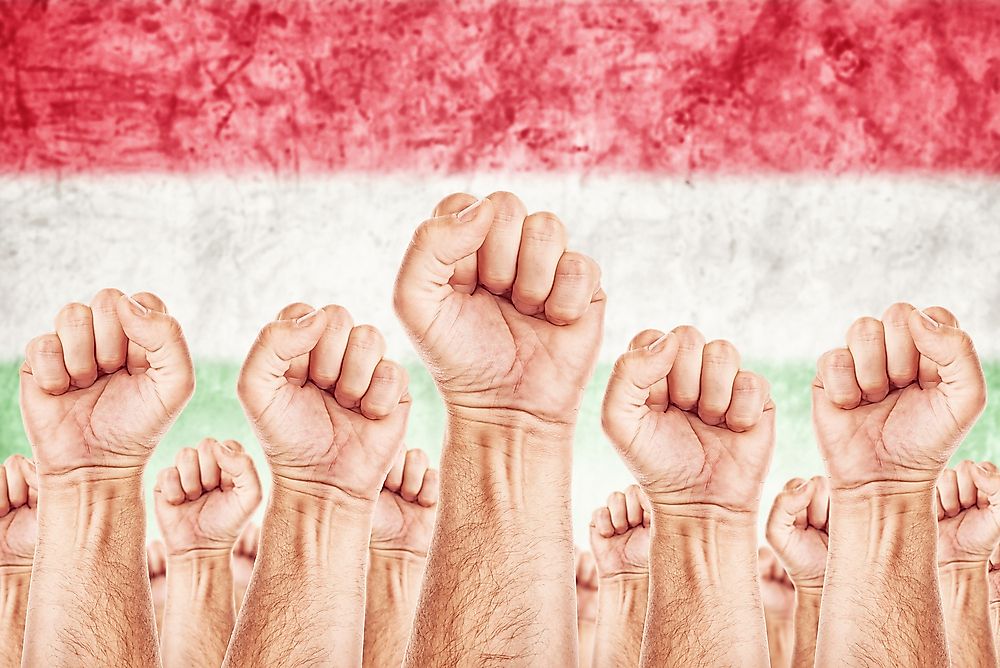The Hungarian Revolution of 1956

The Hungarian Revolution of 1956
The Hungarian Revolution of 1956 was an uprising against the Soviet Union carried out by the citizens of Hungary. Although the national revolt nearly succeeded in overthrowing the Soviet Union, but it was soon squashed as quickly as it had begun. The major players of the war were Hungarian Revolutionaries against the Soviet Armed Forces, Soviet Union, and the KGB.
Background
In March 1944, Nazi Germany invaded and occupied Hungary. At the end of World War II in 1945, the Soviet Union’s Red Army drove out Nazi Germany and established control within the nation. Hungary came under the leadership of communists with Mátyás Rákosi at the helm. Rákosi subscribed to the ideas propagated by Joseph Stalin, and he set out to destroy political opponents and consolidate his power. Hungary became the People’s Republic of Hungary under his leadership. The Security Police (AVH) under Rákosi’s leadership began to purge dissidents, which saw many Hungarians imprisoned, exiled, or killed. The Communist government implemented reforms geared towards creating a communist economy which caused the standards of living in the state to decrease. Thousands of people were forcefully relocated from Budapest to create housing for members of the Working People’s Party. Rákosi reforms, which were intended to raise the country’s economic standards, resulted in rationing of goods and poor living standards for the citizens.
Events Leading Up to the Revolution
Joseph Stalin died on March 5, 1953, following which the Soviet Union replaced Rákosi with Imre Nagy. Nagy instituted some reforms such as releasing political prisoners, but Rákosi was re-instated back to the position. In June the same year, Poles staged a revolt against Soviet Rule, and Nikita Khrushchev granted them a degree of reform. Rákosi’s fall from power came on July 18, 1956, after he was deposed from the helm of the Working People’s Party. In a bold move, Khrushchev criticized Stalin, his policies, as well as his protegees forcing Rákosi to resign. Erno Gero, a Communist, replaced Rákosi. The absence of Rákosi served to encourage criticism and debate between students, journalists, and writers. University students in Szeged revived the Union of Hungarian University and Academy Students (MEFESZ), which had been banned under Rákosi. Intellectual forums began to take place where participants debated on some of the issues facing Hungary.
Revolution
The first open demonstration took place on October 23, 1956, when nearly 20,000 protesters gathered near the statue of Józef Bem, a revered hero in both Poland and Hungary. A manifesto was read before the crowd highlighting some demands including freedom, more food, and disbandment of the Secret Police. The group joined other protesters outside the Parliament Building. The crowd toppled Stalin’s statue after Gero condemned the demonstration. The Soviet Union responded by appointing Imre Nagy as Prime Minister. Nagy tried to get the Soviet to withdraw their troops and restore peace. He announced the abolition of one-party rule and the withdrawal of the nation from the Warsaw Pact. Armed revolutionaries launched attacks on military personnel, suspected Communists, and members of state security. The Soviet Union was alarmed by Nagy’s reforms, which were in conflict with communist ideologies. On November 4, 1956, Soviet Armed Forces trooped into Budapest armed with tanks in a move to crush the uprising. An estimated 2,500 citizens were killed while over 200,000 fled the country. About 13,000 more were wounded while Nagy was captured and executed for treason. The rebellion was crushed, János Kádár ascended to power, and Soviet leadership confirmed once again.











